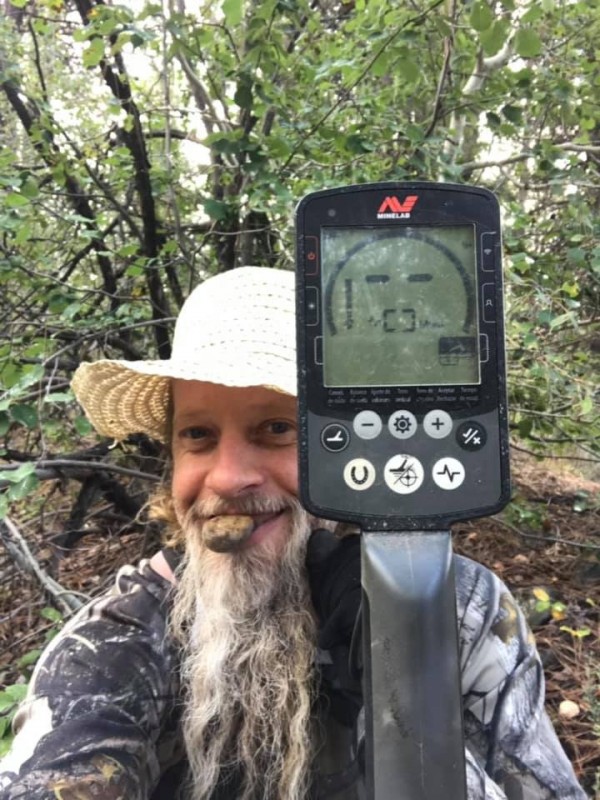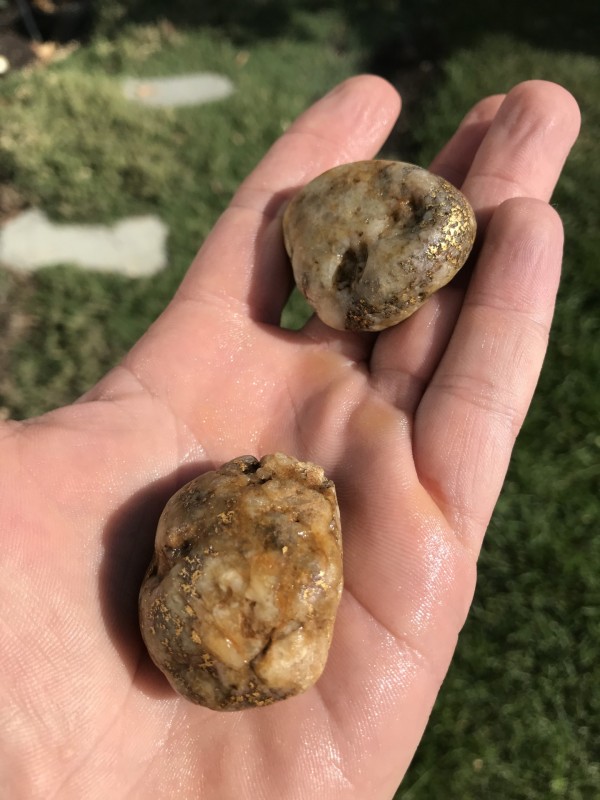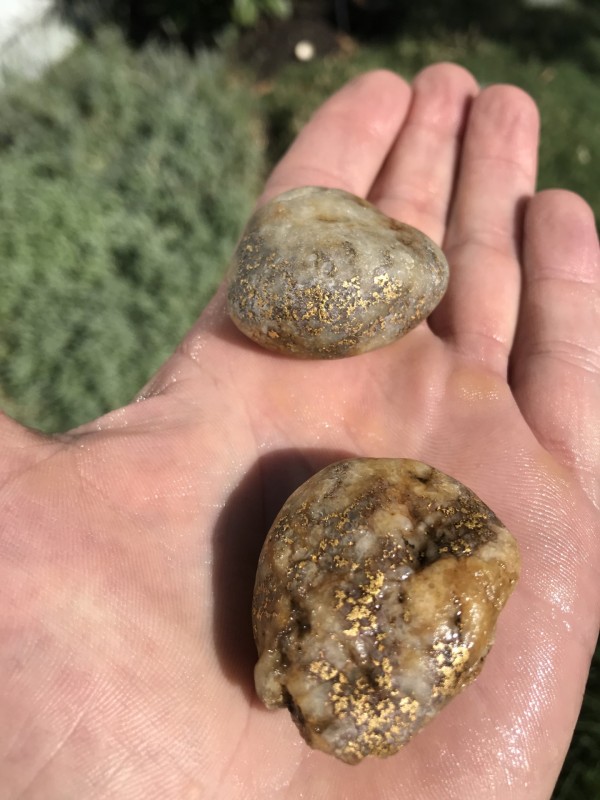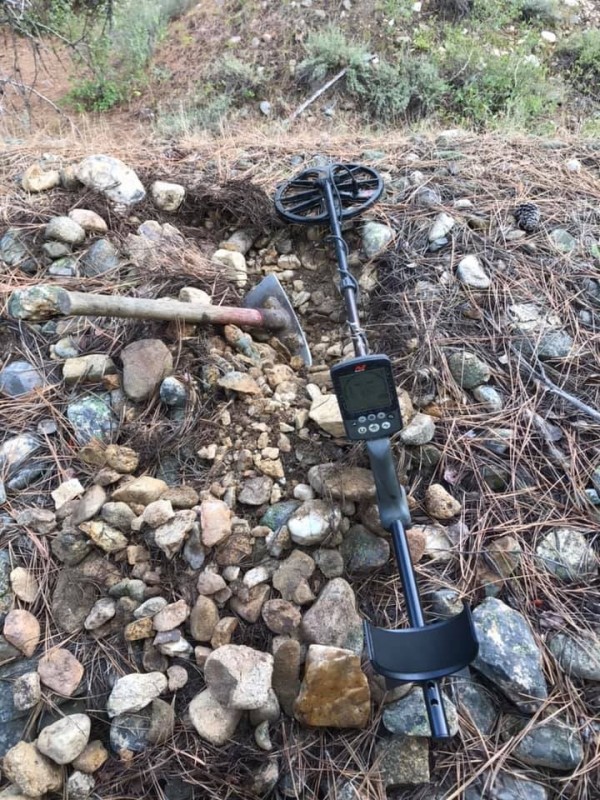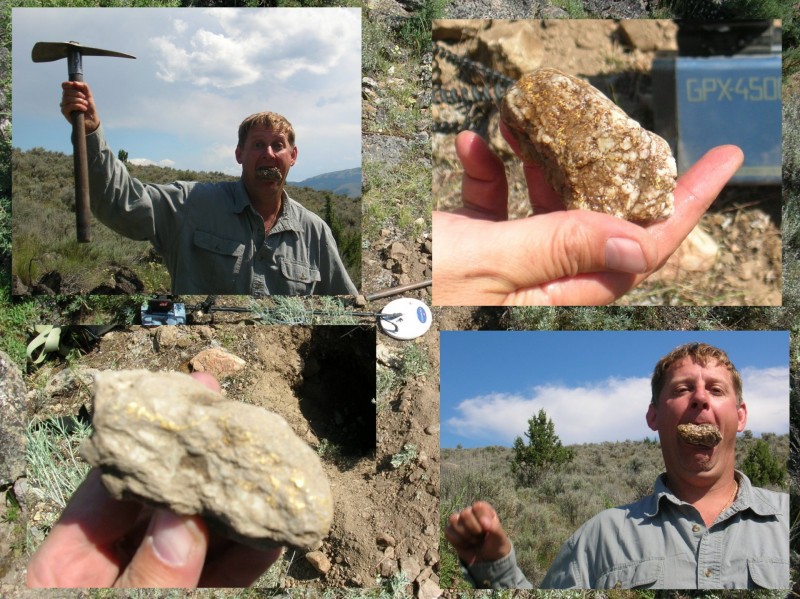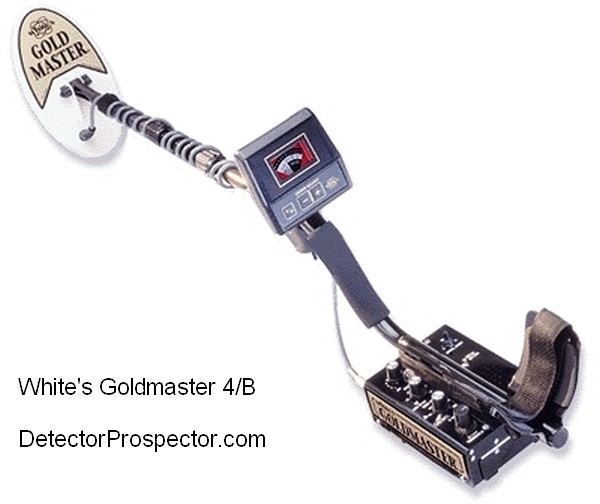Leaderboard
Popular Content
Showing content with the highest reputation on 08/20/2019 in all areas
-
21 points
-
Today I had a chance to get up at dawn and get in a quick hunt before other events of the day. I decided to go to a familiar beach since I had read the surf report and it said there could have been a 3 hour period of 3.5 ft waves at high tide from the WNW! Ok, that is not much energy but better than the 1 ft surf at 16 second intervals all week. Off I went before the mid tides would take my beach. It was a great morning with just a bit of coolness and a partial marine layer but it didn't block the sunrise. Off in the distance you could see the planes going in and out of LAX. My plan was for a quick walk to my location before someone else would get there and then work my way back. As it turns out there were no other detectorists on the beach this morning due to the lack of major energy in the surf. Even the surfers only had small shore break to try and catch. This was the same area where I found my fantastic David Yurman piece a couple of weeks ago. When I walked fast I didn't locate much. I was following the black sand line and would stop on a target and circle and see if there was more but I kept up my plan for about 1.5 miles to my beach. Once there I was walking up and down the slope. This presents the biggest challenge to the Equinox because at the bottom there is lots of black sand and water and at the top it has been 4-5 hours since wet. The ground changes more. I had just a few pennies with all metal and sensitivity at 23 and iron volume up to 10 and everything else stock in Beach 1. (The other day I did a factory reset for the first time in over a year.) I put the iron volume (0-minus 9)up to 10 because I have learned as Simon has also that fringe targets (very deep targets too) often times read negative and when they do that they get the iron tone and it is preset at about 4. I give it a louder response. When I made my turn I found some rocks that had been washed up by the waves and I got some strong hits. Those are the can pieces that were just at the edge of the water. They were not that deep, perhaps 10 inches but they are big so just normal trash. As I worked my way back in the direction I came I worked up a bit higher than when I came in and I got my first quarter. It was deep but there wasn't much around so this is when I decided to go to 25 on the sensitivity. I rarely do this but it sounded ok so I stuck with it for this section of beach. A pattern began to develop in the finds. There was a rather narrow 'streak' or line running parallel to the waves but 5-6 feet above the black sand line. My holes were in a narrowed zone. I was gridding now down this line and also crossing it. Targets would murmur and then you would have to interrogate them and see what number it would stick on or jump around. I got some of the wires this way. Then I got a deep signal that was negative 5-6 and I took off 6 inches and it turned positive. I went down and down and could now fit the entire coil in the hole but it was still there. I lost it a couple of times because I couldn't hear it without sticking the coil on edge into the bottom of the to hear it again. I had to put down the detector and dig with my hand/arm scoop to get deep enough but the sand was not packed. I was over half the length of the scoop into the hole when it came out. I measured and the 11 inch coil can be fit in the hole on top of itself with just a couple of inches above the sand line so I say it is a 20" deep target. It is some kind of 'pot' metal in the shape of a B. The weight is 14.4 grams. Soon after I found a couple of other quarters and then returned the sensitivity to my normal 23 and worked my way back out the beach. I learn something all the time. The last picture is a picture of my finds for last month. It includes the David Yurman piece.3 points
-
Steve, I know you want to be cautious about such things and that is good... But, you always give disclaimers, notices and warnings. I don't see why those ( like me) should be denied any of your most valuable opinions because some one else thinks every setting is the miracle cure.... feel free to delete if I am stepping out of bounds. fred3 points
-
Most detectors have simplified control sets that combine several controls into one or leave other controls out entirely. The White’s V3i offers more granular control of the detector at every level possible and so it’s manuals are a lesson in how detectors work. One main reason I own a V3i is because we will never see another detector again with this level of control. From the White’s V3i Advanced User Manual: Sensitivity Once you select a basic program you may need to adjust the sensitivity settings. Most of the V3i programs are set up with nominal sensitivities, but some (notably the ‘Pro’ programs) are set up a little hotter. Most users believe sensitivity should be run as high as possible. In some cases this is true, but if you find the detector is noisy and falses a lot you probably need to turn it down. There are three primary sensitivity settings, plus a boost mode. Rx Gain Rx Gain (sometimes called preamp gain) sets the gain of the receiver’s input amplifier. In most cases, you want to set this as high as possible and still maintain stable operation. Three things can limit the maximum gain setting. The first is external noise, such as electro-magnetic interference (EMI) including 50/ 60Hz mains and RF. EMI typically shows up as erratic operation and noisy audio. Secondly, in highly mineralized ground excessive gain can cause the input amplifier to overload or operate at close to overload due to the large ground signal, limiting the available range for target detection. Finally, the quality of the loop null can also push the input amplifier toward overload. White’s V-compatible loops are designed to minimize null limitations, but third-party loops typically have wide variances in the quality of the null which can require a lower Rx Gain. EMI affects the lower end of the signal range, which more directly impacts target sensitivity. Both ground signal and loop null affect the upper end of the signal response range, which usually results in a quicker overload. Ground signal and loop null affect target sensitivity only so far as the Rx Gain must be reduced to prevent overload. All-Metal Sensitivity All-Metal Sensitivity (sometimes called DC sensitivity) determines the responsiveness of the all-metal channel. Only target signals above the threshold cause an all-metal response, and a higher all-metal sensitivity setting will increase the all-metal audio response rate to targets. This setting affects all-metal modes including pinpoint and mixed-mode, but does not affect normal discrimination mode. Setting this too high will make the all-metal audio chatter. Discrimination Sensitivity Discrimination Sensitivity (sometimes called AC sensitivity) determines the responsiveness of the discrimination channel. This is a threshold level, so only target signals above the threshold cause a discrimination response. Setting this too high will cause noise and falsing in the discrimination audio. Tx Boost Tx Boost is transmit boost. When enabled, it triples the transmit voltage applied to the loop (from 10V to 30V) and increases the depth. Using this feature has two major drawbacks: it can overload some loops (reduce the Rx Gain), and it quickly drains the battery. There are two common uses for Tx Boost. One is when hunting an unusually “clean” area where most targets have been cleaned out, and only deep targets remain. TX Boost typically gives about a 1” depth increase. The other is when EMI noise is severe. Reducing the Rx Gain reduces EMI but also reduces target signal strength. Applying Tx Boost increases target signal strength but does not increase EMI noise, so Tx Boost can be used to improve signal-to-noise.3 points
-
GB on you are getting two channels of signal processing - it is normally noiser than GB off. Noise cancel, reduce sensitivity get away from emi sources like light dimmers, WiFi, cell radios, power lines and transformers. If it still goes berserk, you may have an issue.3 points
-
Winning bid of $200! That's got to be a deal! I paid like $448 the first time I had one.2 points
-
I'm not saying always, but in an area likely to have lost jewelry like a swimming area or an athletic field it's best to. Gold unfortunately covers the same range as aluminum, so to get one you have to dig the other. In areas much less likely to have lost jewelry, or if you just want to target coins than targeting just those coin numbers is fine and a great capability of the detector. If you are finding lots of old aluminum in an area that would also hold jewelry though it basically means NOBODY has searched it for gold, so I'd at least give it a solid effort and see what you find. If you get to the point its driving you nuts then just hunt coin signals the rest of the day. I mean, it is supposed to be fun!2 points
-
I guess it depends what you mean by use more power. Certainly resistance varies with different coils. In general the detector puts out a regulated amount of power, and a larger coil disperses that power into a larger but weaker detection field. Small coils pump the same power into a more concentrated, more powerful electromagnetic field. This is why small coils react better to small targets, and why it takes larger gold to set large coils off, but at greater depths. Some detectors allow you to change the transmit power via a control, often labeled TX power. Others may vary that setting via programs or “timings”. Or were you simply asking whether different coils can drain the battery faster? Yes. Though most people will never notice the difference. Coil Basics by Carl Moreland2 points
-
I suspect Busho has more experience with ground tracking that you do Chase and has tried all the options suggested. As he has stated multiple times he is not a newbie. He has offered results and a solution that works for him where he is and that other Oz operators will want to pay attention to. Oz soils in general have a different composition than U.S. soils and so comparing results across continents is somewhat like western U.S. operators comparing recovery speed issues to Florida users results. Apples and oranges and will often confuse more than enlighten. I do know ground balancing multiple frequencies presents different issues than ground balancing a single frequency and this may be the root of the problem, especially as regards Oz soils. The Multi-IQ tracking may be deficient by Oz standards... that’s my take away from Busho’s post. Curious Busho... have you tried tracking in single frequency modes? I am only now starting to realize how many people who view posts on the internet tend to grab onto settings of any sort and apply the knowledge as if it’s global in nature when in fact all detector tuning issues are local and differ with the operator and location. A quandary I will have to ponder before posting personal settings going forward.2 points
-
Randy Dee, We also have the microwave internet in our area and some places still can't get it due to the terrain. I have seen microwave units do the same thing in our area, as there are few options for the internet here in the rural areas. The power companies have been working to perfect the internet over their lines, so that they can compete with the phone companies. Currently they can do meter readings, turn on or off the power to select homes/business's without ever being in the same city. Valen2 points
-
You forgot Pinpoint Mode. Pretty tricky to use for actual hunting, unfortunately. And as for it's effects on your numbers, that's a tough one to judge. If you're running at 5kHz, for example, does the pinpoint work at 5kHz, or Multi-freq? It's something I had pondered not long after I got my Equinox, and I think an oscilloscope would easily answer the question ... a rainy day experiment, I think. You're also keen to 'write off' the lowest sensitivity settings, but I was quite pleased to see that the machine could be turned right down. This is good for shallow-target hunting in parks, where you only want the easiest to recover targets, to minimise grass damage. An annoying feature of 'another machine' I own is that even on the lowest sensitivity, it's too 'hot' for this, and you have to rely on your pinpoint probe to judge if it's truly shallow.2 points
-
Here in the UK the internet broad band providers are using wireless microwave mini dish transmitters to provide broad band connection to remote farms, the dishes are mounted close to the main telephone lines on the main highway and I have been detecting on the fields close to the relay dish for many years but this spring time my Equinox and my mates Deus was going berserk and it was then that I noticed the newly installed microwave relay dish, we had to vacate the fields as the noise was unbearable, I later tried my CTX-3030 on the same fields and the noise was the same. .2 points
-
2 points
-
2 points
-
Ok. Battery charged. New location. No Wi-Fi, powerlines, ect. Seems to be working just fine. The problem it turns out, was me. Just a learning curve that I need to master.1 point
-
I often detect in the remote fields of Devon where the mobile signals are marginal. I sometimes get the "going beserk" effect, especially when the data signal is marginal and it seems the mobile is trying to make contact with network. If I switch my iphone completely off, the interference goes away. I could argue then that the interference is a good idea, it reminds me to switch off, (mentally and device) helps me concentrate on detecting without getting interrupted! Cheers1 point
-
I did both of Reg Sniff's suggested mods to my 2013 model TDI SL. I also use a 16v battery pack. I was testing it yesterday on pieces of nickel. I buried a 1 gram piece at 6", and a 1.84 gram piece at 10". The TDI saw both with the 7.5"DF coil, and the 8 x6 NF Sadie coil. The 12"DF coil could only see the 1 grammer....same for the Super Pulse 14" 350. The signal on the 1.84 grammer was faint, but repeatable. I'd definitely have dug it in the field. The signal on the 1 grammer was strong with both the Sadie, and the 7.5DF. Could have easily been deeper. Jim1 point
-
The 600 is a great unit and for many the best value by far. I very often just use the presets with a small tweak to sensitivity and therefore am probably going to get a 600 for use as my dedicated saltwater unit plus general backup machine.1 point
-
I've owned 7 Tesoro's and never had any problems. Will probably outlast me.1 point
-
From a technical perspective a metal detector in perfect tune detecting no targets is in a state of electrical balance and uses no power. Different coil sizes are all tuned to reach this “null” state so in theory coil size makes no difference. These are not antennas transmitting power but more like an alternator circuit creating a magnetic field. A conductive item has current induced into it, causing a power drain. The ground itself is a huge target so simply engaging the coil with the ground uses power, and larger coils “see” more ground. So it is the engagement with a detectable target of some sort that uses the power, not so much the coil by itself. A lot of the battery power actually goes to creating an amplified audio signal which is why headphone use can dramatically save battery power. My first post is more the view from a layman user perspective, the above closer to reality, but I admit to not being a detector designer or tech wizard, so somebody else can probably get closer to the true correct technical aspects. Coil Basics by Carl Moreland1 point
-
Mollie at Minelab has connected with me...I sent the detector module and wm back per her request. I am hopeful. Thank you Mollie! btw; email seems more efficient than the telephone, if one needs to chat with them. Apparently they are very busy....1 point
-
The lower the RS the longer the target sound in the water. More to beach hunting than the dry sand. Wet sand and in the water has its own challenges. Even the dry sand when damp can prevent the use of some of the other modes. IB.... i was running 2... which will make most bottle caps in the water almost disappear .... running 0 you still catch more of um. Is that good or bad? I normally run 3 on the wet sand .... but once in the water i dont care for the odd sound it makes on the hard pan, especially going up a slope. So in my fairly low mineral locations i run RS4. Its all about tweaking it to best suit your hunting and getting as good a performance as you can....... KNOWING there is no perfect setting. Some days im willing to pass up say high non-ferr targets or even lower my settings for a fast recent drop hunt covering a lot of beach. Sometimes a machine can be just to mind numbing HOT and in the long run your day wasnt anymore profitable. In the water most of these machines are getting about the same depth....... so it can come down to what you do differently or where you do it.1 point
-
Chase is totally accurate..... its sealed. If for some reason you need better water protection...... try a couple of wraps of teflon tape on the threads.1 point
-
I no longer collect coins so it more for me than for the snooty collector. Here is a coin i found recently on an E. Coast Fl. beach. Im told its a King Frederick II coin..... somewhere around 1500. Did i clean it properly NO...... but its just a great find. Those IHs are the worst about turning RED if you clean them. Soaking them in mineral oil will do little.... it not like olive oil. Its not a corrosive ment to clean.... its ment to preserve.1 point
-
Mineral oil WILL enhance RED copper coins bringing them back to a more natural color. Ive used it for years it came from someone i knew who wrote for Coin World. Unlike vinegar and other harsh ways..... even long time olive oil soaking .... people tend to forget to use something to STOP the corrosive process like baking power in water once the desired cleaning is complete. We used to just rub the heck out of coins to make the PRETTY. Now days coin collecting has turned into such a BUSINESS...... shameful in so many ways.1 point
-
Eventually, when you come across and understand what iron bias does, you'll see a similar thing. 4 settings for the 600 vs 10 for the 800, but the max setting of 4 on the 600 equals 6 on the 800. Other differences you will notice include limitations on non-ferrous tone settings, limitations on single frequency selections, lack of the user profile button, lack of backlight adjustment, lack of included wireless audio accessories (but the 600 is wireless ready), etc. These are all nice, but not necessarily essential "missing" features on the 600. The 600 is a very capable detector in its own right, so you shouldn't be discouraged once you start realizing what you can and cannot do vs.the 800. Definitely peruse the Essential Info thread and for a more comprehensive look at 600 vs. 800 features see this forum link in the essentials thread and Steve's Minelab Treasure Talk artcle on the subject, here. Welcome and happy hunting with your 600.1 point
-
Hey all, sorry I didnt get back sooner or when I said. Some things came up, family, work that took all my focus away. Kept meaning to get back but thing after thing took all my attention. But, many had given help and info, yep some I took the wrong way, but have not forgotten. Anyway, my EQ. Box, coil, all checked and done. So, like I said have owned a lot so wont bore you all with it all, but will admit im not a know it all. So here it is with the EQ where I am, all checked, box n coil where a I live. Tracking here where I am in Central Vic Aus, compared to Gt's, Ft,s, XT,s, Eurekas........ below them all. That's why I was so questioning about the EQ's tracking. In a nut shell, it's tracking here is weak, almost non existent. But! You can get it to. Lets say you are using it, walking about, check the balance by raising/lowering. It's out. Raise and lower it from several inches above the ground to actually bumping the coil on the ground physically, "bang" on the ground. It will now balance using Auto Track Balance. Anything else nothing will happen other than a few number changes. Lets say you check and are in 70! But do a manual bal and it goes to 30! Go back to 70 for trial manually. Now, go into Auto Track bal. Raise and lower the coil but as you lower it actually bang the coil to the ground surface. Now it will balance to the same level as it would have done doing a ground balance but only raising and lowering the coil from several inches above the ground to a couple above it without touching the ground, the same you would have done with every other VLF before this EQ! In our hot ground here in OZ in central Vic, for the last couple of month's, this GB procedure, has proven Spot On. Treating it like all previous VLF non PI's has been a total failure using Auto Track/Auto GB. Cheers Guy's.1 point
-
1 point
-
I was in the same place you are a few months ago. I have learned a ton here as well. My best advice is read lots to learn but keep the actual detecting simple. Just use the default settings, noise cancel, ground balance if needed, adjust the sensitivity down enough so you dont have constant chatter, and just detect. Listen closely to the target, then dig it up and see what it is. Pretty soon you will be guessing what's down there before you dig like the rest of us (and be wrong fairly often like the rest of us 😀)1 point
-
Funny you should ask. I got a call last week for a ring search in one of the canals in the Channel Islands. A guy lost his wedding ring in about 10-12 feet of water. They know the general area(within 10-15 yards) but I'm not able to dive because I still haven't taken the plunge to get scuba certified. As for SoCal, we've been sanded in at most of my spots and in some new spots I've literally detected for hours on end in the wet sand with only one or two signals. I hunted a reasonably well populated beach the other day during AM low tide and dug one signal in two hours. The wife and I haven't made our trip to Pismo yet. We took the plunge and went to the UK for vacation this summer and blew two or three vacation funds in the process but it was worth it. School is back in session now so detecting time is slowing down for a bit but winter storms are on the horizon. Keep up the good work!1 point
-
No worries, that’s my job, to remember every post made in the last five years Welcome to the forum! If you have not done it yet check out the Minelab Equinox Essential Information pinned at the top of this forum. This subject is one of those listed among many.1 point
-
Okay, sorry, I tried looking for the answer before asking but didn’t look enough I guess! Brand new new to this forum and happy to be here.1 point
-
@midlake, I have not tried that but it is a great idea that I will try at the beach. Seems like all metal mode is a good way to test. Thanks!1 point
-
1 point
-
Interesting. I haven't experienced anything other than miles from any power lines, but others have.1 point
-
Lacky, If the power company has installed smart meters in your area they are using the power lines for the internet and they send a frequency through it in order to have their internet for the meters. The high voltage lines will cause many problems during high humidity and can cause certain connections to pop every now and then. If you hear that it is a sign that it is the power lines. Valen1 point
-
Thanks for your kind remarks folks, this gold is from the Marlborough region in the South Island of NZ.1 point
-
My little brother shared with me a couple recent finds over the weekend with his EQ-800 and stock 11" coil. Smaller specimen is 48.5 grams and its bigger brother is a sly heavier at 53.5 grams. Each piece probably has close to 8 to 12 grams of gold in them and in todays value approx. $300 to $500. What is so cool about this style of gold, is a GPX-5000 will not see it. In fact what further makes many minds wonder is why the GPZ-7000 misses many of them as well? I've personally found larger pieces in the multi ounce range and they have over 1 ozt of gold in them, but I try my best to get a GP/GPZ or GPZ to read and I get nothing. On occasion some are heard with a bigger machine, but then the VLF can see them 12" away. Moral of the story? Just owning a big dog detector for a variety of gold is a mistake and most owners don't know. So you better own both to have all bases covered.1 point
-
1 point
-
Shipping is a rip off here in the US, that much is a given. We have to deal with high shipping costs within the country and even from state to state. Big companies like FedEx getting richer with every package. I use a Mars Pinpointer and must say it is the best pinpointer I've ever owned. There are some really hungry companies not in the USA that are making a quality product (like the MarsMD pinpointer mentioned). While I would prefer to buy and use things made in my own country that is getting harder to do. Quality has decreased horribly, the price has risen and "Made in the USA" doesn't mean what it once did. This isn't just concerning metal detectors. Feels like to me it is that big companies here could care less about what they are making anymore. Their goal is to get richer and spend less on the products to get there. It's a shame we built one of the longest operational spacecraft here in the US back in the 70's (The Voyager 2) but today we struggle to make the simplest of things and have them last for a reasonable amount of time. The problems are clear- greed, complacency, arrogance, and laziness. Not a doubt in my mind that Whites and Garrett could make some really groundbreaking detectors if they truly wanted to but there is nothing yet pushing them hard enough to do so. Will they wake from their slumber and realize it is 2019 now, and people have changed. I remember when I was young time and again I was told that you could tell if something was good or not by seeing how it "felt". The heavier the better was the old-timers thought process. But once you get older, start having some pains due to accidents or injuries that solid product becomes a real pain literally to enjoy using. Even XP lowered their prices. And hey, they created a really innovative product. Competition keeps manufacturers honest, even if it is delayed honesty. Not picking on XP here, they make a nice product. Who would have ever thought such a light detector could be so strong and actually work. But they got it right, and I don't know if anyone else can quite match what they've done. At least they relented on price. No such sign of that from a lot of the others. The thing or things a person enjoys is the beauty in us all because it is different for every person. All I know is that I want something that works and if I take care of it doesn't fall apart in my hands or cease to work after a day. If I must pay more, let me know it is worth it and stand behind it.1 point
-
My door bell is probably what the house came with in 1968. It let's me know when someone is there. What else does it need to do? It's always easier to add flashy bells and whistles than it is to functionally improve performance. My compound bow is 6 years old. The company has released 2 to 4 new models every year since it was made but none of them are functionally any improvement over the one I have, just a bunch of hype. Metal detectors detect metal. EM field science is pretty set and settled. It's much harder to functionally improve metal detectors. I dont even expect the simplex to do it. They are just taking lots of useful known specs and making them much more affordable. If it detects no better than a similer frequency machine from 10 or 20 years ago but is waterproof, has TID, and a simple to use notch function at a fraction of the price I'm happy. I really have no idea where I'm going with this and thought about deleting it. But after pecking it out with my one finger typing I dont really want to do that either. All I really wanted to say is my door bell is 50 years old and I couldn't care less.😀1 point
-
Welcome to the forum Joe If the machine is going to be used 99% of the time doing other things, why do you need it? The machines you have are fine for such minimal use. Your Equinox 600 with 6” coil in Field Mode 2 and all metal/horseshoe engaged will be very close to the Gold Bug Pro in performance. Both are just slightly better than a properly tuned T2 with small coil. Basically you have three detectors that are very close in performance and you are just splitting hairs as to which may be the best. Everyone has favorites and you can collect opinions all week long, but the truth is I personally could use any one of them or a dozen other VLF detectors and go find gold. It’s not the tiny difference between this hot VLF or that hot VLF that will make the difference, it is your access to good gold bearing ground and your knowledge of the machine you use that will make the difference between success or failure. Bottom line is the Gold Bug Pro is a very simple to use and very well proven detector. If you can’t find gold with it, find better ground and work on your detecting skills. But I could say the same of the other two machines you already own also. As far as Equinox goes, the 600 is nearly as good as the 800 for nugget detecting. I advise either Park 2 or Field 2, not Park 1 as mentioned by the earlier poster. I am sure I am one of the few that’s actually put it to the test and most people just assume the 600 is not near the gold finding machine as the 800 simply because the 800 has a “Gold Mode” and the 600 does not. From my article at https://www.detectorprospector.com/forums/topic/6799-equinox-800-gold-nugget-detecting-tips/ Note: the following works as well on both Equinox 600 and Equinox 800. Since Gold Mode lacks target tones, going to Field 2 and using the solutions above plus the additional possibility of tones is another alternative. Instead of using Gold Mode and blocking the lowest target id numbers they can be left open to signal as ferrous or mixed ferrous targets. And you now have 5, 10, and 15 kHz options that Gold Mode lacks. Be very careful because the default rejection pattern for Field 2 rejects target id 1 and 2. This will reject most small gold nugget readings and reduce signal strength on larger gold by blocking part of the signal. Field 2 set up properly is quite close to Gold Mode performance and a perfectly acceptable nugget detecting alternative. Field Mode 2 Frequency: Multi Ground Balance: Auto (Ground pump method) Sensitivity: 18 - 23 Recovery Speed: 4 - 6 (default is 7) Iron Bias: 0 Accept/Reject: Everything accepted, rely on tones (alternative reject -9, -8, and -7 if too much ground feedback) There are so many decent VLF detectors you can use now it’s like asking which computer you can get to best run Microsoft Word. I see minimal difference in actual gold found between a 1995 Fisher Gold Bug 2 and any competitive machine made since. The VLF tech flatlined some time ago and from my perspective everything since is just different flavors of ice cream. All tasty but none all that much superior to the others. The operator in my opinion makes the difference in all the ways that matter. Best of luck to you no matter what detector you choose to use. Steve's Guide to Gold Nugget Detectors1 point
-
Had to walk Heidi anyway, so grabbed the TDI and did the tests. The 7.5DF lost the deep target, Some, but not a lot of difference on the shallow target. The 12DF couldn't see the deep target anyway, but could still see the shallow target. Now a couple of things to keep in mind. One is that when I did the initial battery tests a couple of years ago, It seemed to me that the smaller coils didn't gain much by the higher voltage...a little, but not much. Second is that where you see the benefit of all these mods is at the fringes. You're stretching the limits so to speak. So, if you have a strong target at 16v, you're still going to have a decent target at 12v. But, a weak target at 16v may be gone at 12v. The shallow target was not at the fringe with the 16v pack, but the deep target was. Shallow target could have been an inch or more deeper. Even the 14" 350 Super Pulse coil could see it. My pack was at 11.8v just now. One thing that surprised me the other day was that in previous tests, using the 1 grain gold bar, in air tests, the 12DF was the most sensitive. But in the in-the-ground tests, the 7.5DF, and the Sadie were both better. I haven't come to a conclusion about that. I didn't have time to do a battery comparison on the in-the-ground gold bar. When I tried that with the 16v, I could get a repeatable signal at 2 1/2" with the Sadie, and 7.5DF. Couldn't see it with the 12DF at that depth. Jim1 point
-
1 point
-
I have found two tiny 10K gold chains at two different public school grounds. Both came in bouncing between +4 and +5 at 3" or less depth and had an almost crackly sound like aluminum foil sometimes does. I actually thought they were small foil targets but dug them anyway!!!! Park 1, tone break 2 was 1 to 10 with no other custom audio settings on the 800. Jeff1 point
-
Marc, I appreciate the kind words and this forum sure would enjoy seeing more of your posts/finds. Many of the followers don't know your detector background, but I'll assure them you know gold detectors and have found your share and then some. It is so hard for some very successful detector operators to step away from their tried/true gold grabbers...but at the same time, you miss out on the improvements of new detectors and sometimes technologies. Glad you are enjoying the Gold Monster 1000, as it is a really great tool and much easier than many of our old school days. Peg, You too were hesitant at 1st and now look at you and what you can do with a Monster. Sure wish you'd take that EQ-800 out of the box and do a side by side. Maybe invite me this fall and we'll devirginize the 800. Thanks for your support all these years. JW, If I keep looking at your photos of the EQ-800 and them tiny bits (which shows your skill and bragging rights- well earned), I think it is easy for me to stop selling the other VLF detectors. You are a master my friend and keep it up. Anyone wanting a GM-1000 before the price goes up on Aug. 15th., call me and we'll get one to you. As always, we also offer the VET 15% discount. Gerry's Detectors in Boise Idaho 208-345-8898. Thanks, Gerry1 point
-
Chase, I agree with you except I think that Nokta/Makro detectors have surpassed the AT series so even at a reduced price the AT line won't support Garrett much longer.1 point
-
A guy in our local club is selling his GMT for $100. Has health issues. Great price for a really capable gold detector Jim.1 point
-
It needs to be a deal as it was the least popular Goldmaster by far. The first Goldmaster stuffed in a coin detecting box, it was widely panned by users and dealers alike when it came out. I sold a zillion Goldmaster II, V/SAT, and GM3 models. The 4/B gutted my Goldmaster sales and especially so since the Gold Bug 2 came out at that time and many people switched. I essentially stopped selling Goldmasters because of the 4/B until the GMT came out. Jimmy Sierra raised hell and got a clunky chest mount version made that Jim mentions, but it was not very popular either. It worked just fine and $150 is not a bad price but if you ever sell it don’t expect to move it fast. I’d invest the money in a 24K personally. Guide to Goldmaster Series White’s Goldmaster 4/B1 point
-
Once you got the basics down, I posted this in other forums but geared to those with a new Christmas present who are new to detecting and/or the Equinox... For those who just got a new Equinox but who have less detecting experience (Equinox is their first or second machine), I recommend a few things to help you climb the Equinox learning curve faster:Test it out on test targets in a test garden or at a productive site like a park, athletic field, or on a dry sand part of the beach to get used to its language. It can be different than what you are used to, but the way to learn it best is to just get out there and dig targets.While you are learning the machine, avoid the temptation to adjust any of the user settings or to switch modes. Stick with a single mode, preferably Park 1 (works well even on the dry sand of a salt beach), at the default settings and get really comfortable with the machine. Since each of the modes behave somewhat like a different detector, you want to avoid the situation where you are climbing multiple learning curves at once.Even though each of the modes are "optimized" for certain types of targets and detecting situations/site conditions (see the manual), any of the Park/Field modes used at their default settings will work for 90% of targets and 90% of conditions and there is plenty of target overlap between modes (i.e., you can find silver coins in a relic mode such as field 2 and relics in a coin mode such as Park 1), so pick a mode and stick with it while getting comfortable with the Equinox. Quick Mode Summary (remember, these are the optimizations, all the modes will detect most non-ferrous target types, just that some will be more sensitive and you may get slightly more depth or the optimal targets will "pop" more in certain modes):Park 1 - high conductive and large deep targets like silver and copper coins, coin spills, and coin caches. (Low frequency weighted). Minimal falsing due to high iron bias setting and disc at 1. 5 tonesPark 2 - mid-conductive coins and small, typically gold, jewelry items (higher frequency weighted). 50 tones. No iron bias. Disc at 0.Field 1 - Similar to Park 1, designed for plucking non-ferrous out of plowed fields, but weighted towards high conductive targets (most coins) therefore just a 2 tone mode. No Iron Bias. Disc at 2.Field 2 - Similar to Park 2 - but optimized for relics and small mid-conductive targets such as brass, lead, tin, nickel, pewter, gold, and, unfortunately, aluminum (nature's little practical joke on detectorists). Disc at 2.Beach 1/2 - Optimized for high conductors but will find gold jewelry on wet sand (Beach 1) and surf (Beach 2). Disc at 0. Medium iron bias.Gold 1/2 - VCO audio mode ideal for nugget shooting or mid conductive relics, will display a target ID but no audio ID just tone intensity and pitch raises with larger and/or shallower targets.The default settings are fine for 95% of normal detecting situations. The only adjustments you need make are to noise cancel the machine, run a ground balance (even then you can get away with the default ground balance setting for most situations), and then adjust sensitivity only as high as necessary to keep the machine running stable. Anywhere from 18 to 22 on sensitivity will give you plenty of depth. There are situations, especially in mild ground or where there is low EMI where you can run up to the max sensitivity, if desired. But avoid overdriving sensitivity just for the sake of trying to max it out, you will likely just introduce noise and instability and end up doing worse than if you just left it alone or reduced it a bit. Sometimes, even when the machine appears stable (i.e., no chatter with the coil in the air) at high sensitivities, there may be other subtle clues you have sensitivity too high such as excessive iron falsing or unstable target IDs, so be aware of these "tells" if you are running at high sensitivity. Site conditions other than EMI levels such as ferrous and trash density also play into the sensitivity level setting decision. In some cases, establishing target separation is more important than depth (discussed more in the recovery speed section below), so establishing your best recovery speed setting in balance with the right sensitivity setting will optimize the situation at hand.When you get comfortable enough to adjust other user settings such as discrimination, tone breaks, recovery speed, and iron bias. Go easy on the adjustments so you don't turn the machine into something you can no longer recognize. Performance settings such as recovery speed and iron bias only typically need need to be adjusted one or two clicks from the default at most. Higher recovery speed settings improve separation in high trash but set too high and you will affect depth. Trying to lower recovery too low to max out on depth (similar to overly increasing sensitivity) you will start to introduce ground noise, especially if you don't adjust your swing rate consistent with your recovery speed setting. Iron bias helps (a little) with iron falsing but it can also tend to mask keeper targets hiding amongst the iron (which counters the primary advantage of Equinox, its fast recovery speed enabling separation between trash and treasure). I just leave Iron Bias at 0 most of the time.Use Beach mode only on salt sand beaches (wet sand and surf). Any of the modes will run stable on dry salt sand beaches and in freshwater conditions. The beach modes can be slightly less sensitive in normal terrestrial hunting because they are optimized for salt ground conditions and will also throttle back transmit power when high mineralization conditions are sensed, so don't use the Beach modes other than at wet salt sand conditions.Avoid the prospecting/gold modes at first, until you have a level of comfort with the machine, because it does not have tone ID and uses VCO pitch audio, which is a whole different ball game and has a learning curve of its own. All modes and settings have their advantages and tradeoffs (downsides). Learning how to master the Equinox by balancing those tradeoffs and understanding what the tonal nuances are keys to success. To get there, you need to put in the swing hours and dig a lot of trash targets and you will gradually kill it out there. There are no shortcuts, so avoid deviating from the plan out of frustration. Be patient, learn and you will do well.Finally, there are no absolutes, so don't be afraid to experiment a little but also, if something is working for you, stick with it.1 point




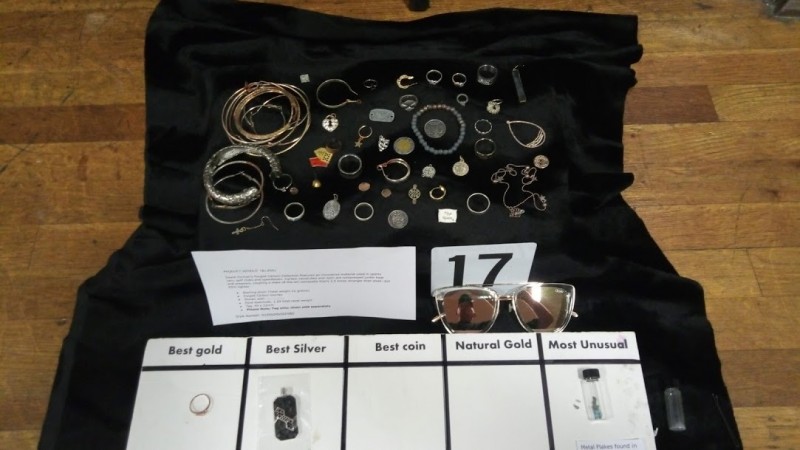
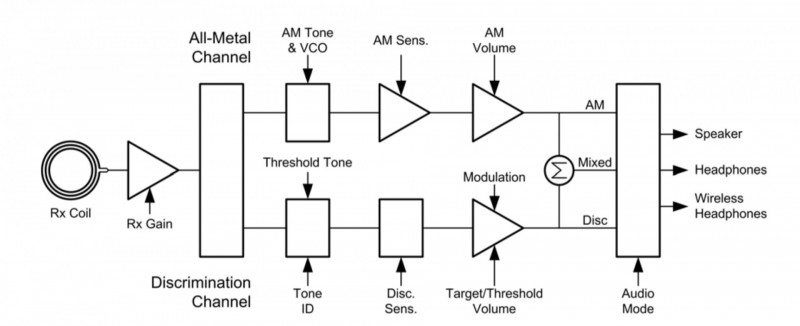



.thumb.jpg.a9604472c3cce6d83a8d8fcc887e33bc.jpg)

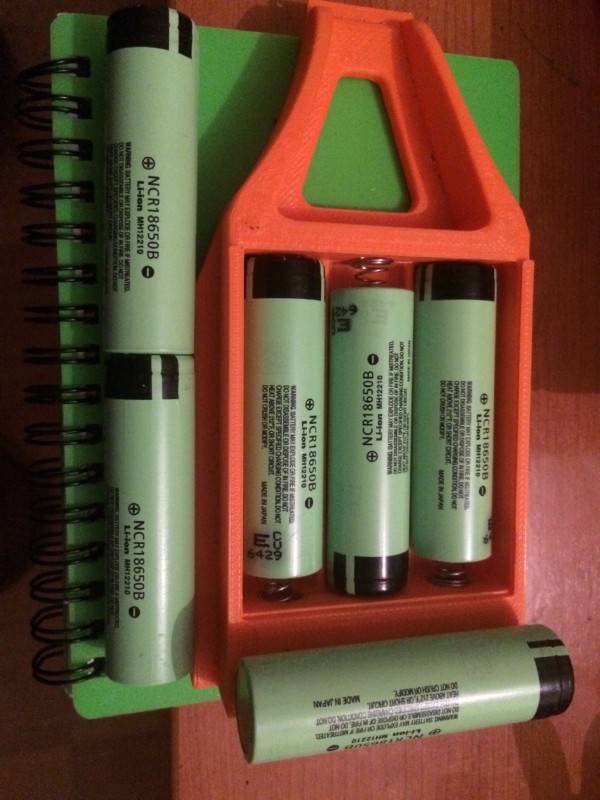
.thumb.jpg.ac5e8ee36e43bcab745dbc623fcf1874.jpg)





